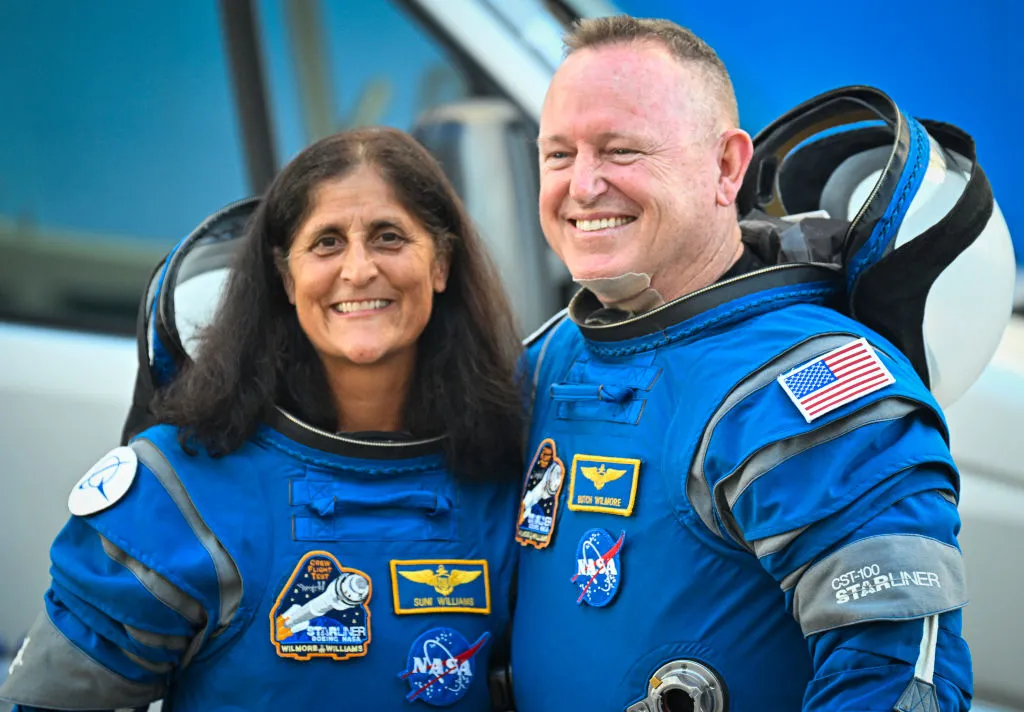
NASA has decided to return Boeing’s Starliner spacecraft to Earth without a crew on board, opting instead for astronauts Butch Wilmore and Sunita Williams to remain on the International Space Station (ISS) until February 2025.
The two astronauts, who initially traveled to the ISS on the Starliner in June, will come home using a SpaceX Crew Dragon as part of the Crew-9 mission. This decision comes after months of data analysis and internal deliberations prompted by concerns over Starliner’s thruster, valve, and helium issues, which have made predicting the spacecraft’s performance challenging.
Starliner’s Original Plan
The initial plan for the Starliner mission was for Wilmore and Williams to spend only about eight days on the ISS before returning to Earth on the Starliner. However, shortly after the launch on June 5, issues arose with the spacecraft’s systems. Five of its 28 thrusters went offline during the final approach to the ISS, and helium leaks were detected in the propulsion system. Tests conducted at NASA’s White Sands Test Facility suggested that deformed Teflon seals could be a contributing factor to the thruster failures.
Due to the limitations of accessing the spacecraft while it is docked at the ISS, NASA and Boeing engineers could not definitively pinpoint the exact cause of the malfunctions.
Assessing Risks Leads to a New Plan
Given these ongoing issues and the inability to accurately predict thruster behavior during critical flight phases such as undocking, deorbit burn, and re-entry, NASA determined that proceeding with a crewed return was too risky.
Steve Stich, manager of NASA’s Commercial Crew Program, emphasized that the decision was driven by uncertainty surrounding the thruster data and the associated risks. He noted that without reliable predictions of thruster performance, the potential for thruster failures posed too great a danger to the crew. Stich also mentioned that NASA is planning to implement a simplified separation technique during the uncrewed test flight to ensure a safer and quicker departure from the ISS.
The Crew-9 mission, originally scheduled to launch four crew members to the ISS at the end of September, will now be adjusted to include only two crew members, making room for Wilmore and Williams for their return journey. Modifications to the Crew Dragon spacecraft are underway, including the addition of seats and the inclusion of Dragon spacesuits for the two astronauts. By the time Wilmore and Williams return to Earth, they will have spent around eight months on the ISS, participating in research, station maintenance, and potentially a few spacewalks.
What Does the Future Hold for Boeing’s Starliner?
The Starliner program, part of a $4.2 billion contract awarded to Boeing by NASA in 2014, aims to provide NASA with a second commercial crew transportation option alongside SpaceX. However, the program has faced numerous delays and technical challenges, leading to cost overruns exceeding $1.5 billion.
Despite these setbacks, NASA officials remain committed to the partnership with Boeing. At a recent press conference, NASA Associate Administrator Ken Bowersox addressed questions regarding trust in Boeing, acknowledging the emotional investment and intense discussions surrounding the decision. He reiterated NASA’s dedication to working closely with Boeing to ensure future success.
NASA Administrator Bill Nelson also spoke about the decision, referencing past incidents where communication breakdowns within NASA led to catastrophic losses. Nelson highlighted the importance of maintaining a culture where employees can voice safety concerns without hesitation. He reiterated that spaceflight inherently carries risks, and emphasized that NASA’s commitment to safety was the guiding principle behind the decision to return the Starliner uncrewed. Nelson expressed confidence that the Starliner would eventually be able to conduct successful crewed missions to the ISS, reaffirming NASA’s support for Boeing’s efforts to overcome current challenges.
The next steps involve preparing the Starliner for an uncrewed return to Earth. A second part of the readiness review is scheduled for the coming week, with undocking expected to take place early next month.
Featured Image courtesy of MIGUEL J. RODRIGUEZ CARRILLO/AFP via Getty Images
Follow us for more recent updates on Starliner mission.
